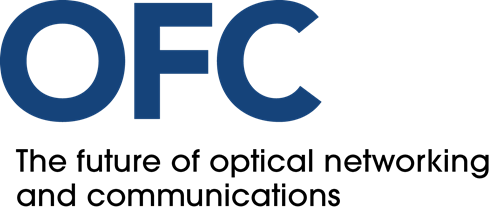SC451 - Distributed Fiber Optic Sensing for Communication Networks and Infrastructure Applications
16 Mar 2026
13:30 - 17:30
Short Course Level
Advanced Beginner to Intermediate
Short Course Description
This course reviews fiber optic sensing (FOS) technology with a principal focus on distributed fiber optic sensing (DFOS) systems, as well as the associated specialty fiber types and optical components commonly required to provide full sensing systems. Emphasis is placed on reviewing DFOS uses and its benefits in terrestrial optical networks and subsea link monitoring applications. The course also covers a broad overview of other applications that have monetized fiber optic networks including real-life aerospace, structural health monitoring (SHM), geotechnical, transportation, energy and electric power system DFOS applications.
The course is divided into two parts. Part I describes the operating principles, types, and required components (such as light sources, detectors, couplers, polarizers, etc.) for FOS. The use of Rayleigh, Raman and Brillouin scattering effects will be reviewed and how they are used as long-range measuring instruments of distributed temperature, strain, vibration, and acoustic signals. While in Part II, participants will be introduced to the practical utilization and implementation of DFOS technology in real-life applications and the specific uses of DTS (distributed temperature sensing), DSS (Distributed Strain Sensing) and DAS (distributed acoustic sensing), in optical networking and infrastructure monitoring applications, along with the fiber cables, installation equipment and procedures commonly needed to integrate the full solutions, install and operate them. The technical advantages and operational and economic benefits of using DTS, DSS and DAS based systems for sensing and asset surveillance applications will also be discussed.
Short Course Benefits
This course will enable the participant to:
- Describe the operating principles, characteristics and advantages of fiber optic sensors.
- Review the background of single-point fiber sensor types such as Fabry Perot (FP), Fiber Bragg grating (FBG), Long-Period Gratings (LPG), and others.
- Learn the required components necessary to make complete fiber sensing systems.
- Review the operating principles of distributed sensing systems based on Raman,
Brillouin and Rayleigh scattering, for DTS (distributed temperature sensing), DSS
(Distributed Strain Sensing) and DAS (distributed acoustic sensing). - Discuss the applications, benefits and challenges of using DFOS for the monitoring of
optical networks, data centers, and subsea long-haul links. - Gain an overall view of the FOS industry and its trends by reviewing a broad variety of
common DFOS applications for security, energy, transportation, infrastructure,
aerospace and other sectors.
Short Course Audience
This course is intended for technical managers, scientists, engineers, technicians and students who wish to learn about optical fiber sensing technology and review their operating principles and associated applications. The course is also suitable for gaining an overview of the field for marketing and technical personnel wishing to examine prospects in the optical sensing area.
-
Alexis Méndez
MCH Engineering, LLC, United States
Alexis Méndez is President of MCH Engineering LLC, and has over 25 years of experience in optical fiber technology, sensors and instrumentation. He was the former Group Leader of the Fiber Optic Sensors Lab within ABB Corporate Research (USA), working on the development of new fiber optic sensing systems for electric utility and oil & gas applications. He also was Director of Engineering Senisng Solutions at Micron Optics Inc. He has written over 75 technical publications, holds 5 US patents and is recipient of an R&D 100 award. He is member of OSA, a SPIE Fellow, editor of the Specialty Optical Fibers Handbook, co-author of SPIE’s “Fiber Optical Sensors Book—Fundamentals
& Applications, 4th Ed.”, as well as Series Editor of the CRC Fiber Optic Sensors book series. He is also VP of the IEEE Fiber Optic Sensors Standards Committee, and was past chair of the International Optical Fiber Sensors Conference (OFS-18). Dr. Mendez holds a PhD. degree in Electrical Engineering from Brown University (1992). -
Andres Chavarria
VIAVI Solutions, United States
Andres Chavarria is VIAVI Solutions Market Development Manager for Fiber Optic Sensing and has over 20 years of experience on engineering sensing fiber optic sensing solutions for geophysical, earth science and infrastructure monitoring applications. He was formerly the Technical Director at LUNA Innovations-OptaSense where he was responsible sensing applications for telecom, energy and geotechnical and scientific verticals. He was also Geophysics Manager at SR2020 and Paulsson. Dr.Chavarria holds a B.Sc in seismic engineering from the National University (UNAM) in Mexico, and a PhD. degree in Geophysics from Duke University.
